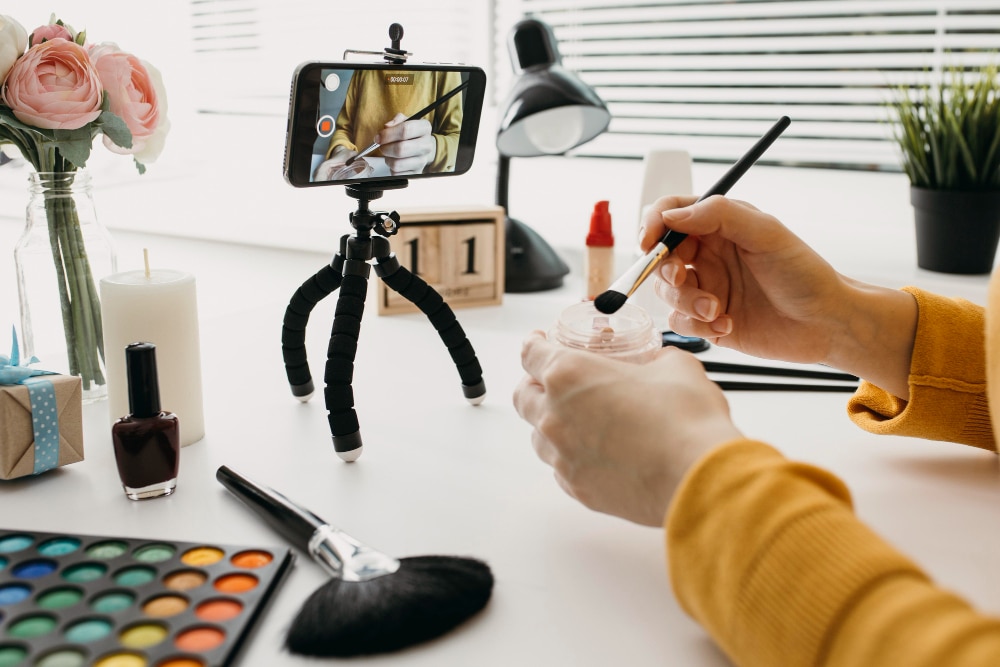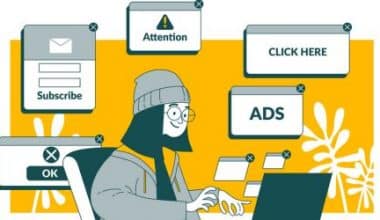What if you could share your adventures with the world, but weren’t sure where to start or which platform would actually get you noticed? Let me introduce you to vlogging.
Vlogging is an avenue for sharing your ideas and everyday activities through videos. Think of it as the video form of blogging. It is much more than pointing a camera at your face and talking—it’s a platform to share your passions, tell compelling stories, and connect with people across the globe. With video content dominating the digital space, it’s no wonder that vlogging has become one of the best ways to build a personal brand, a business, or simply share your life’s journey. Here’s all you need to succeed with vlogging.
What Is Vlogging?
At its core, vlogging is the art of sharing your world through video. Whether you’re reviewing the latest tech gadget, offering travel tips, or sharing your daily routine, vlogging lets you turn everyday experiences into engaging content that resonates with a global audience.
To effectively understand how vlogging works, we need to look back at its beginnings. Vlogging, short for “video blogging,” started as a natural progression from traditional text blogging. Back in the early 2000s, bloggers who already had large followings realized they could connect more personally with their audience by showing, rather than just telling.
One of the earliest and most influential vloggers was Casey Neistat. In 2010, he started a daily Vlog series on YouTube, sharing snippets of his life as a filmmaker in New York City. His cinematic style, infused with personal stories and motivational messages, set the standard for modern vlogging.
Read Also: Video Storytelling: Its Benefits to Your Brand
Major Platforms For Vlogging
YouTube was the main platform that was used for vlogging. The video-sharing site launched in 2005 and quickly became a space where everyday people could broadcast their stories to a global audience. Soon, platforms like Instagram and Snapchat jumped on the trend, offering features like Stories, IGTV, and vertical video formats. By 2019, TikTok came into the picture, entirely revolutionizing vlogging with its short, punchy videos that capture attention in seconds.
Types of Vlogging
Over the years, vlogging has diversified into many genres, and the beauty of it is that there’s a niche for everyone. Some popular categories include:
- Personal Vlogs: Day-in-the-life or lifestyle vlogs that document the creator’s daily experiences.
- Travel Vlogs: Showcasing exotic locations, with tips and stories from the creator’s journeys.
- Tech Vlogs: Reviewing the latest gadgets, often with hands-on demonstrations.
- Beauty and Fashion Vlogs: Sharing makeup tutorials, product reviews, and style tips.
- Educational Vlogs: Teaching new skills, offering advice, or sharing expert insights on specific topics.
With over 3.37 billion people using social media globally, video content consumption is at an all-time high. Vlogging allows you to not only share content but to engage your audience on a personal level. It offers an intimate connection that text and photos can’t match, making it one of the most impactful forms of communication online.
Vlogging Kits: What You Need to Start

You might feel overwhelmed by the idea of starting a vlog, but here’s a secret: You don’t need to buy the most expensive gear or wait for the perfect moment to get started. In fact, many successful vloggers began with just a smartphone and a simple idea. The key is to start, experiment, and improve over time.
Essential Equipment
#1. Cameras
If you’re a beginner, don’t overthink it. The camera on your smartphone is a powerful tool and often the best place to start. As you grow, consider upgrading to a DSLR or mirrorless camera. A few beginner-friendly options include:
- Canon EOS Rebel T7: Affordable, reliable, and excellent for beginner vloggers.
- Sony ZV-1: Designed specifically for vlogging, with a flip screen and easy-to-use features.
- GoPro Hero10: Great for travel or action vlogging due to its compact size and durability.
#2. Microphones

Poor audio quality can ruin even the most visually stunning video. Viewers are far more forgiving of subpar visuals than bad sound. A few popular options include:
- Rode VideoMicro: Compact and easy to attach to your camera or phone.
- Blue Yeti USB Mic: Perfect for desktop use if you’re recording indoors or narrating your vlog.
#3. Lighting
Lighting can make or break your video’s professionalism. While natural light is your best friend, here are a few lighting options to consider:
- Ring Light: Perfect for close-up shots or indoor filming.
- Softbox Lights: If you’re filming in a studio or home setting, these give you a soft, professional look.
Choosing The Best Platform For Vlogging
While YouTube remains the dominant platform for vlogging, Instagram, TikTok, and even Twitch are also powerful tools for growing your audience. Each platform caters to different types of content and viewing habits. Here are a few factors to consider:
YouTube
Youtube is best for long-form content (10+ minutes), it’s SEO capabilities make it a top choice for discoverability. With over 2 billion monthly active users, it offers huge potential for growth.
Perfect for lifestyle vlogs, fashion, and beauty influencers, Instagram Stories, Reels, and IGTV allow you to share both short and long-form content in an immersive, visual way.
TikTok
If you’re good at quick, creative storytelling, TikTok is your go-to platform. Videos are typically under a minute, but the platform’s viral nature can skyrocket your content to millions of viewers in no time.
Now the main deal; how to create a vlog?
Creating A Vlog: Actionable Steps
Creating a vlog is more than just doing something and pressing the record button—it’s about creating a story that resonates with your audience. You need to plan your content, keep your viewers engaged, and always strive for improvement. Here are the best practices to follow:
Planning Your Content
Before you start recording, it’s important to have a content plan. This means knowing your niche and understanding what your audience is looking for. For instance, if you’re a travel vlogger, your viewers might want to know about hidden gems, budget tips, or cultural insights.
Begin by brainstorming ideas. What stories do you want to tell? Maybe it’s your experience trying new restaurants in your city, a day in your life as a fitness enthusiast, or your journey through a new hobby. Write down a list of potential topics and think about how you can bring your unique perspective into the mix.
Creating a content calendar helps you stay consistent. One of the biggest pitfalls new vloggers face is inconsistency. Aim to post at least once a week, and more frequently if possible. Viewers appreciate routine and will return if they know when to expect your next video.
Filming and Editing
When it comes to filming, you don’t need to be a professional videographer to create engaging content. Here are a few quick filming tips:
- Lighting: Always film with natural light when possible. If indoors, position yourself near a window.
- Angles and Framing: Experiment with different camera angles to keep your video dynamic. Avoid holding the camera too close to your face—keep a comfortable distance.
- Audio: Speak clearly and avoid background noise. A wind muff on your microphone can help reduce interference if you’re outside.
After filming, editing is where your vlog truly comes to life. This process might seem daunting, but with user-friendly software like “iMovie” (for Mac users) or “Adobe Premiere Rush”, you can make cuts, add transitions, and include background music to keep your video flowing smoothly. “Canva” also offers easy-to-use templates for video intros and outros.
The key here is storytelling. Edit out the unnecessary bits and keep your vlog engaging from start to finish. Attention spans are short, so avoid lengthy, unedited segments that might cause viewers to click away.
Optimizing Your Vlog for SEO

In 2024, simply uploading a video isn’t enough—people need to find it. That’s where SEO (Search Engine Optimization) comes into play. YouTube is the second-largest search engine in the world, and mastering SEO can help your vlogs reach a broader audience. Here are some things you can do:
#1. Conduct Keyword Research
The first step to optimizing your vlog is identifying the right keywords. Think about what your target audience is searching for. For example, if your vlog explains “what is vlogging,” use that exact phrase in your title and description. Use tools like Google Keyword Planner, TubeBuddy, and VidIQ to find relevant keywords with high search volume and low competition.
#2. Optimize Titles, Descriptions, and Tags
Your video title is the first thing potential viewers see, so make it catchy but informative. For example, a title like “What is Vlogging? How to Start Your Own Channel in 2024” is both intriguing and packed with relevant keywords.
In your description, briefly summarise your vlog and incorporate your main keywords naturally. Be sure to include any links to related videos, your social media, or a blog post for cross-promotion.
Tags are another important factor in getting your vlog out there. These are the keywords that help categorize your video. For a vlogging tutorial, use tags like “vlog,” “how to vlog,” “vlogging equipment,” and “vlog editing tips.” These will help YouTube’s algorithm suggest your video to viewers interested in those topics.
#3. Use Thumbnails
An often overlooked part of SEO is your thumbnail. A bright, clear, and visually appealing thumbnail can significantly increase your video’s click-through rate. Use large, bold text and a clear image of yourself (or a key moment from your vlog) to make your video stand out.
Read Also: 10+ SEO Automation Tools That Boost Efficiency
Growing Your Vlog Audience
Once you’ve posted a few vlogs, the next challenge is growing your audience. Getting views requires more than just great content—it’s about building a community around your channel. Here are some measures you can take to grow your vlog:
#1. Promote Your Vlogs
Social media is your best friend when it comes to promoting your videos. Share your vlog on Instagram Stories, Facebook, Twitter, and TikTok. Each platform can drive traffic back to your YouTube channel. If you’ve built an email list, send out regular updates to your subscribers when you upload a new vlog.
Engaging with your viewers is just as important. Reply to comments, ask your audience questions, and encourage them to subscribe. The more interactive your channel is, the more likely viewers will stick around.
Read Also: Interactive Facebook Posts: Level Up Your Marketing Strategy
#2. Collaborations and Cross-Promotion
Collaborating with other vloggers is one of the fastest ways to grow your audience. Reach out to creators in your niche and suggest a collaboration. This could be anything from a guest appearance to a co-hosted episode. When two audiences overlap, it creates exposure for both parties.
Another strategy is cross-promotion. If you have a blog, podcast, or social media following, promote your vlogs there. Embedding videos in blog posts or including video clips in Instagram Stories are great ways to expand your reach.
Read Also: Elevate Your Brand’s Marketing Strategies With PR Boxes
Monetizing Your Vlog
This is the sweetest part; I mean, who doesn’t like money?
As your vlog grows, you’ll definitely think of how to make money from it. While it might not happen overnight, there are several ways to monetize your vlogging efforts.
#1. YouTube Partner Program
If you’re vlogging on YouTube, one of the first steps is joining the YouTube Partner Program, which allows you to earn revenue through ads placed on your videos. To qualify, your channel needs 1,000 subscribers and 4,000 hours of watch time over the past 12 months. Once you’re approved, you’ll start earning a portion of the ad revenue from YouTube.
#2. Affiliate Marketing
Affiliate marketing is another popular method. This involves promoting products or services in your vlogs and including a special link in the description. When a viewer purchases through your link, you earn a commission. For example, if you’re a tech vlogger, you could promote camera gear or editing software you personally use and love.
#3. Sponsorships
As your channel grows, brands may approach you for sponsorship deals. This typically involves featuring their product in your vlog, giving a review, or creating dedicated content around their brand. Be sure to only accept deals with companies that align with your values and interests—authenticity is key when building trust with your audience.
I’ve compressed these points into a detailed checklist for you below:
Common Vlogging Mistakes You Should Avoid
When I first started vlogging, I was so focused on pumping out content that I neglected some crucial aspects of quality. I didn’t pay attention to the audio, my lighting was off, and I wasn’t putting enough effort into planning my videos. Over time, I learned that success in vlogging requires balance.
Here are a few common mistakes that new vloggers often make—and how you can avoid them:
#1. Choosing a topic that you are not interested in
As much as some vloggers earn more than others, it’s not enough reason for you to work on a topic that does not interest you. The likely thing that will happen is that you’ll lose interest and motivation when it seems like you’re not getting enough cash. I’ll always advise that you do what you love; there’s a level of satisfaction that comes with having people see what you love doing and the topics that interest you.
#2. Neglecting video and sound quality
Always pay attention to the quality of your video. A poor video and sound quality can reduce all your efforts to shambles. To attract a large audience, you need to shoot videos with a good camera. It doesn’t have to be an expensive device: many budget manufacturers offer good enough video recording devices at an affordable price. A smartphone is also suitable – many modern models can shoot in 4K.The same applies to the sound, but if it doesn’t seem good enough to you, it’s better to invest in good equipment.
#3. Poor editing
Editing a video for your channel is not simply making a slideshow with photos of your pet. It would be best to learn some basics of video editing before you even start. You can even solicit help by showing your friends your video and asking for constructive feedback. Remember: the visual component is the most important thing!
Too much editing is another problem. If viewers can overlook the lack of editing or its small amount for the sake of an interesting video, then too many transitions, frames, or color changes will quickly tire them. Of course, you can use them, but everything has its time and place. Overediting will work as a short visual joke, but for the rest of the video, it’s best to know when to stop.
#4. Overlooking engagement
Always take your viewers into consideration. Viewers are ready to share their opinions, desires, as well as criticize and inspire. Regularly review the comments under your video, communicate with your audience, and look for useful tips. This helps to foster community.
#5. Lack of a script
Before recording each new video, you should sketch out, if not a detailed, then at least an approximate script (unless impromptu is a feature of the channel). Improvisation is great and always attracts the viewer, but it’s better to do everything according to the plan: then it will take less time to make, and the resulting product will be of better quality.
#6. Neglecting SEO
Your efforts will always be a waste if your videos do not reach the right audience and drive enough traffic. Without proper optimization, your videos will get lost in the multitude of content online. Always take time to research your keywords, craft engaging titles, and use descriptive tags.
#7. Lack of consistency
Consistency is key. You won’t get much results if you do not keep at what you’re doing. Stick to a consistent upload schedule, whether it’s once a week or more. Consistency builds loyalty and keeps viewers coming back.
Future of Vlogging in 2024 and Beyond
Over time, vlogging has continuously evolved, with the tide tilting toward short-form content, live streaming, and interactive videos.
#1. Short-Form Content
Platforms like TikTok and Instagram Reels are dominating in short-form video content. This type of content is fast-paced and easily digestible, making it perfect for capturing attention in just a few seconds.
#2. Live Streaming
Live streaming has gained popularity as it offers real-time interaction with viewers. YouTube, Instagram, and even Twitch are excellent platforms for live streaming. It allows you to host Q&As, behind-the-scenes glimpses, or special events with your audience.
#3. AI Tools
Artificial Intelligence is revolutionizing vlogging. AI-powered editing tools can help streamline your workflow, automatically cutting out dead air, suggesting edits, or even enhancing video quality. Additionally, algorithms are becoming more adept at personalizing content recommendations for viewers, making your videos more discoverable.
Do Vloggers Make Money?
Yes, you can make money as a vlogger through various methods, including ad revenue from platforms like YouTube, brand sponsorships, affiliate marketing, merchandise sales, and crowdfunding via platforms like Patreon. Earnings vary widely, depending on audience size, engagement, and niche.
What Is The Difference Between Blogging and Vlogging?
A blog is very similar to a website, where one can find content regarding any topic in a written/text format, along with images, gifs, etc. A vlog, on the other hand, consists of video content published on any topic.
What Is The Best Platform For Vlogging?
The best platform for vlogging depends on your goals, but YouTube is the top choice due to its massive audience, monetization options, and discoverability. TikTok is great for short-form content, while Instagram and Facebook suit lifestyle vlogs. Twitch is ideal for live vlogging.
In Conclusion
In essence, vlogging is an opportunity; a chance to connect with others, share your unique perspective, and create something that can make an impact. Whether you’re a hobbyist looking to document your life or an aspiring content creator aiming to build a personal brand, vlogging offers endless possibilities.
Related Articles
- How To Vlog: Even If Your Life Is Boring
- 50+ YouTube Content Ideas to Boost Your Channel in 2024.
- How to Be a Content Creator That Brands Are Desperate to Hire
- How to Get More YouTube Subscribers Free: No Ads, No Spending a Dime






